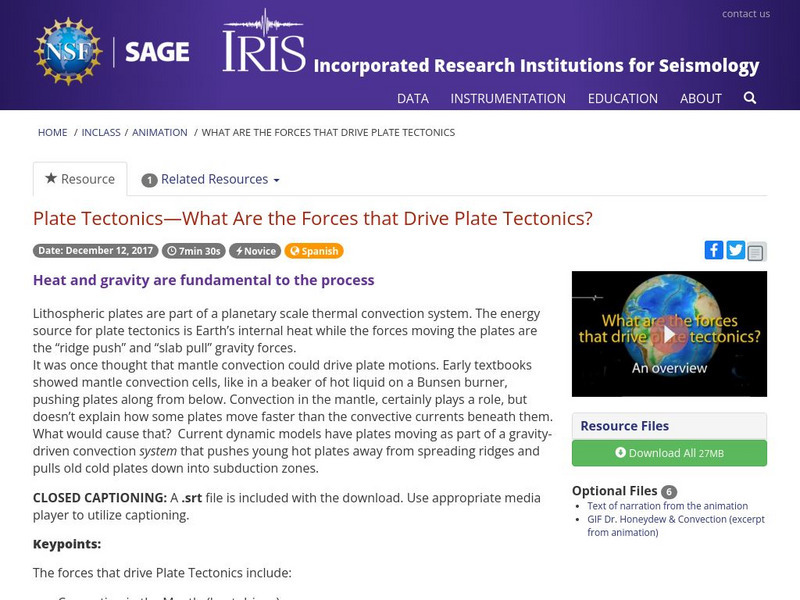MinuteEarth
Why The Ocean Needs Salt
Our oceans don’t technically contain salt, but the ions salt is made of play a critical role in planet-wide processes that make the Earth habitable.
Crash Course
What Does the Atmosphere Do Crash Course Geography
Much like a cell membrane, our atmosphere forms a protective boundary between outer space and the biosphere that allows for all life to exist on Earth’s surface. Today, we’re going to talk about its composition and layers (the...
SciShow
5 Things We Still Don't Know About the Solar System
We've already learned a lot about the solar system, but sometimes the most fascinating things are what we DON'T know.
Bozeman Science
Plate Tectonics
Mr. Andersen describes how plate tectonics shapes our planet. Continental and oceanic platers are contrasted and major plate boundaries are discussed.
Curated Video
Continental Drift
The theory that the continents are not fixed in place but move around the planet. A Twig Science Glossary Film. Key scientific terms defined in just 60 seconds using stunning images and concise textual definitions. Twig Science Glossary...
Curated Video
Lithosphere
The upper layers of the Earth, consisting of the crust and upper mantle, as opposed to the more fluid lower mantle and core. A Twig Science Glossary Film. Key scientific terms defined in just 60 seconds using stunning images and concise...
Curated Video
Heat Transport
Conduction, convection and radiation are all ways in which heat is transported. How does each work, and what are they useful for? Physics - Energy And Radioactivity - Learning Points. The three types of heat transport are conduction,...
Curated Video
Plate Tectonics
From volcanic eruptions to massive earthquakes to tidal waves, Earth's tectonic plates can be responsible for catastrophic natural disasters. Earth Science - Geology - Learning Points. The rising and falling of intense heat deep inside...
Visual Learning Systems
Diverging and Sliding Plates
This video explains the concept of plate tectonics and the movement of Earth's crust. It discusses the three types of plate boundaries - divergent, convergent, and transform. The video also introduces the idea of convection currents...
The Backyard Scientist
Best Fire Tornado - DIY - no moving parts!
The best way to make a fire tornado (in my opinion!) All you need are 2 glass half-cylinders. No moving parts, no fans, no squeaky bearings, just fire and forget!
Howard Hughes Medical Institute
Holmes' Model of Convection
Convection currents do more than just bake a cake. A quick lesson demonstrates the convection currents of the earth and how they contribute to continental drift. An animation illustrates the movement of the currents and demonstrates how...
Be Smart
Why Does the Wind Blow?
When you tell people you know why the wind blows, it won't be a bunch of hot air. In the video from PBS Digital Studios, viewers learn how wind is a consequence of differences in air pressure. Along the way, the video covers the Coriolis...
DoodleScience
Heat Transfer - Conduction and Convection
Use science to explain why sitting on a metal bench on a cold day isn't a good idea. The instructor describes conduction and convection through drawings and animations. Learners understand how conduction and convection transfer heat...
Incorporated Research Institutions for Seismology
Iris: Thermal Convection: What Are the Forces That Drive Plate Tectonics?
Video introduces mantle convection which is the slow creeping motion of Earth's solid silicate mantle caused by convection currents carrying heat from the interior of the Earth to the surface. It goes on to explain how the Earth's...




